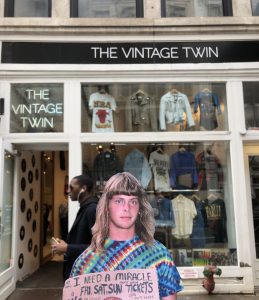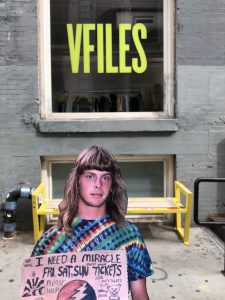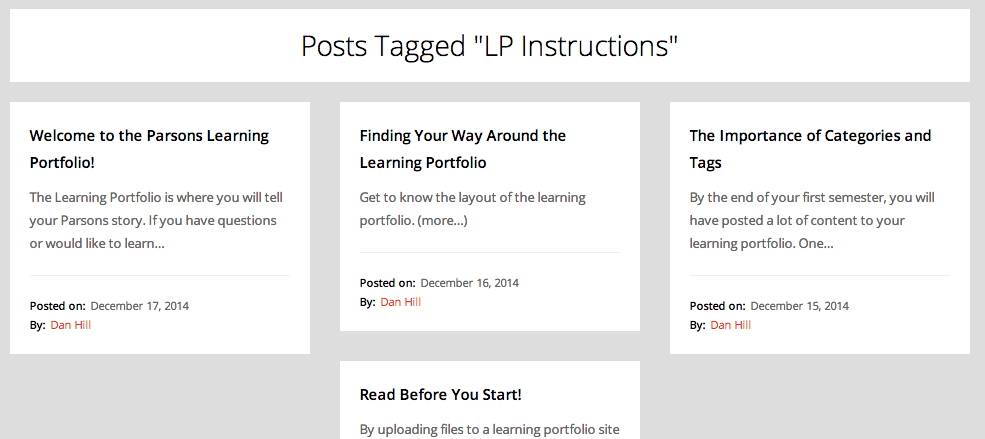Over the past week, I have continued to develop and test my “FASHION IS DEAD” project in various ways. Last week, I joined several Deadhead facebook groups and published posts in said groups explaining my concept and my need for a model. Although I received a fair amount of positive feedback in the form of “likes” and comments, I did not discover any prospective or willing models. By Saturday, I was beginning to feel pretty defeated. I wondered if I had taken on a project that was too ambitious or unrealistic, or perhaps one that simply involved too many elements that were out of my control.
On Wednesday, during class, I scoured the internet for Grateful Dead cover bands playing in or near New York sometime in the following week. I figured, if I had no success in the facebook groups, I could find a model at a cover band gig. Lamentably, most Grateful Dead cover bands play in upstate New York — but I did rediscover an event that was happening right in Manhattan: “Ship of Fools,” a three hour cruise around Manhattan featuring the music of the Grateful Dead. I remember very excitedly discovering this event several months ago, only to realize it was a 21+ event. This time, however, I decided that I wasn’t going to let an age restriction stop me from attending this event. I knew I had to be there. And so, I reached out to the event coordinator and explained my situation to him — and, to my surprise, he granted me permission to attend!
I arrived at 23rd street and FDR Drive at 6:45, and was immediately welcomed by the sight of dozens of Deadheads, clad in their usual attire — thank goodness! As I reached the front of the line, a man holding a multi-page list asked for my name. Before I could even respond, I glanced very briefly at the list in his hands and exclaimed, “Oh my God!”
“Are you high?” He asked me.
“No, of course not–”
“I don’t care if you are, I’m just wondering,” he replied.
But really, I wasn’t! Rather, I’d let out a very dramatic gasp because I spotted an all-too-familiar name on the aforementioned list: Jim Daley!
Jim is the very first person I interviewed for this project, back in March when I conducted on-site interviews at Radio City. That night, Jim handed me a wallet-sized card that contained information regarding the book he’d recently published recounting his experience taping 150+ Dead shows through the eighties. He told me to check out his book on Amazon. I made a mental note to purchase it later, and subsequently added his book to my list of sources for my research paper. Two weeks later, I made a trip out to Port Chester to see Phil Lesh at the Capitol Theatre. Towards the end of the second set, as the band launched into a particularly upbeat “I Know You Rider”, I spotted a familiar face sifting through the crowd: Jim from Radio City! I immediately tapped his shoulder and reminded him who I was/how I knew him. I told him I was using his book in my research, and that I’d written about him in my sketchbook (which I coincidentally had with me that night). Jim was dumbfounded, and proceeded to tell me that he’d come to the show that night with ten copies of his book; he’d sold nine of the ten copies, and wanted to give his very last copy to me. He told me to find him during intermission. And so, during intermission, Jim brought me out into the hall and handed me a copy of his book, not before signing it and wishing me the best of luck with my project. We hugged each other for a long time before parting ways again. Shortly thereafter, a man approached me and told me that he knew he was “witnessing a very special moment” between Jim and I; he was a photographer and captured the moment between Jim and I (unbeknownst to either of us). The moment felt, for lack of a better word, completely serendipitous.
To run into Jim at the Capitol Theatre was completely fortuitous. To see his name on the list at this event, one month later, was a sign: he had to be my model.
As soon as I boarded the boat, I kept an eye out for Jim. I watched him stroll down the dock no more than twenty minutes later. I immediately waved at him; he looked astonished. I approached him almost immediately and explained that I’d spotted his name on the list, and how excited I was to see him. I told him I had something important to ask him, and so we walked over to a quieter area, and I explained the final facet of my project to him. I told him that I’d come to the event that night in search of a model, and that as soon as I saw his name on the list, I knew it had to be him. Jim repeatedly told me how humbled he was by this whole experience; he told me he would do “absolutely anything” for my project.
So, there you have it! I’ve found my model — and I couldn’t have picked a better one.
Beyond my interaction with Jim, I’ve also been communicating with other Deadheads through the facebook groups to get a sense of how to reapproach my t-shirt design. I was told to add more color (my preliminary design was a simple black-and-white composition), and I’ve had Deadheads suggest lyrics to include in my design that, for them, encapsulate what it means to be a Deadhead. I’ve been texting/e-mailing Jim, too, and asked for his feedback as well. After receiving suggestions from the community, I came up with some new iterations (as seen below):
At this point, I am confident that I will employ lyrics from the Grateful Dead’s “Terrapin Station” in my design. The lyrics from this song resonate with me the most of any Dead song, and the line “things we’ve never seen will seem familiar” truly epitomizes my journey and experience as a Deadhead. For me, the Grateful Dead’s discography is its own macrocosm; each song represents a different part of this much larger structure. Terrapin Station is the lifelong journey through this seemingly limitless universe.
Jim suggested lyrics from “Fire on the Mountain”:
“The more that you give
The more it will take
To the thin line line beyond which you really can’t fake.”
When I posted in one GD facebook group asking about words/lyrics/phrases that encapsulate the experience of being a Deadhead, I received a number of responses. One woman — an artist named Jen — suggested lyrics from the Grateful Dead’s “Days Between”:
“Walked halfway around the world
On promise of the glow.”
Right now, I’m deciding between Jim’s suggested lyric and Jen’s lyric for the back of the shirt (although I may end up using both, and simply place one on the sleeve).
Earlier today, I also decided to test out some of the sites I intend to photograph Jim in front of in two weeks. I felt it wouldn’t make sense to simply photograph the sites as is, so I printed out one of my favorite Deadhead portraits and held it out in front of the various spaces to get a sense of how this shoot may go with Jim. I only received a few (judgmental) stares as I photographed my little cut-out, but I’d imagine that when I do the shoot with Jim, I might receive more puzzled reactions.










